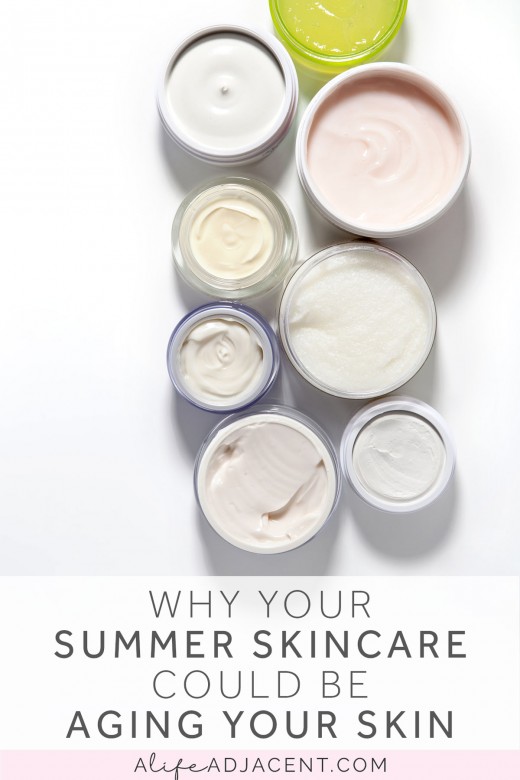
As the weather gets warmer, it becomes increasingly important to be mindful of what goes on your skin.
We all know that sunscreen is crucial for protecting against the destructive effects of ultraviolet light. So put on some SPF and you’re set, right?
Actually, that might not be enough.
Even if you choose a natural, zinc-oxide based sunscreen, your best attempts at anti-aging could potentially be impeded by the oils in your favourite skincare products.
You might have heard about the dangers of excess polyunsaturated fats in your diet – but did you know that they can also be harmful to your skin?
In this article, you will learn:
- Why polyunsaturated oils can damage your skin
- What this means for your skin care products
- Simple swaps to help you protect yourself
Table of Contents
- The dangers of polyunsaturated fats
- Sunlight and polyunsaturated fats
- Polyunsaturated fats and your skin
- Monounsaturated fats: a safer option
- Saturated fats: the best option
- How to build a low-PUFA skincare regimen
- Low-PUFA SPF for face
- Low-PUFA SPF for body
- Low-PUFA facial oils
- Low-PUFA eye care
- Low-PUFA makeup
- Low-PUFA lip care
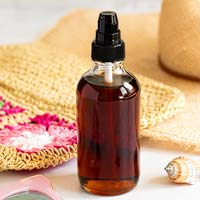
DIY Tanning Oil (Low-PUFA)
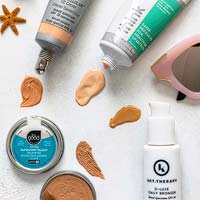
The dangers of polyunsaturated fats
What do oils like sweet almond, sunflower, argan, and rosehip have in common? Aside from being common in skin care products, they’re all composed predominantly of polyunsaturated fatty acids, or PUFAs for short.
PUFAs, otherwise known as omega-6 and omega-3, are the most unstable fatty acids of all. These fatty acids are easily oxidized (or in other words, damaged) in the presence of light, heat and oxygen.
The reason PUFAs are so volatile is because their molecules contain double bonds, which are weak and easily broken apart. Oxygen has no problem sneaking into these double bonds, leading to oxidation.
When a fatty acid oxidizes, it creates a chain reaction of free radicals that chemists refer to as free radical cascades. Once set in motion, a free radical cascade goes on to damage normal, previously undamaged lipids.
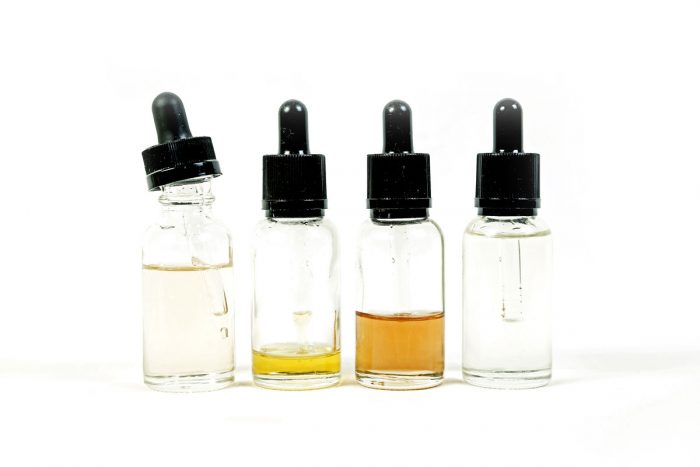
Photo: © vgatto / Adobe Stock
Sunlight and polyunsaturated fats
If polyunsaturated oils are easily oxidized by light, heat, and oxygen, and going out in the sun guarantees that you will be exposed to high levels of light, heat, and oxygen – then you can likely see how wearing your favourite facial oil outdoors could pose a serious problem.
Not only can the sun oxidize the lipids in the oil, but it can also extend this damage to the lipids in your skin.
PUFAs have been identified as one of the main culprits that cause cellular damage in the presence of radiation. And as we know, the sun emits radiation in the form of ultraviolet (UV) light.
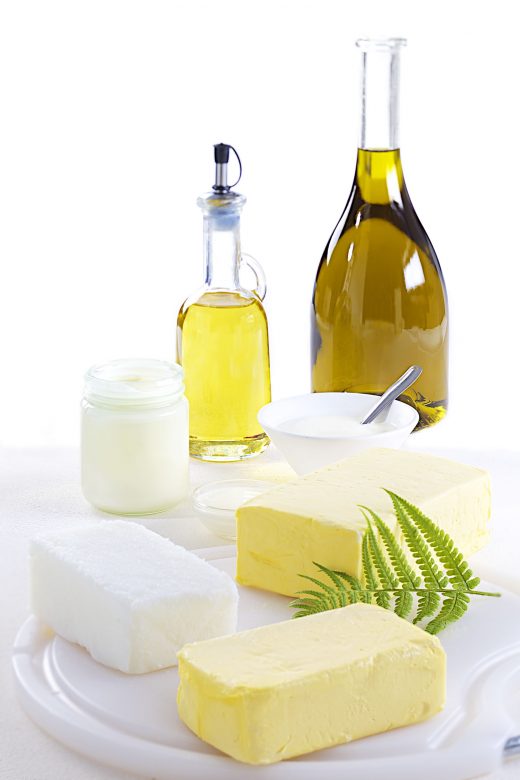
Photo: © JPC-PROD / Adobe Stock
In one study, two groups of shaved rabbits were fed diets containing either corn oil or coconut oil. After exposure to sunlight, the rabbits fed corn oil developed wrinkled, aged skin. Conversely, the rabbits fed coconut oil showed no such damage from the sun exposure.
What does this mean? On one hand, this suggests that excess dietary PUFAs are connected to skin aging.
But if it’s true that too many polyunsaturated fatty acids in the skin leads to accelerated aging, perhaps caution should be taken when wearing them on the skin as well.
At the very least, it’s clear that polyunsaturated oils may not be the best choice for wearing out in the sun.
Polyunsaturated fats and your skin
If your goal is to have healthy skin, you may wish to opt for low-PUFA skincare products.
This goes for anything you put on your skin, whether it is a facial oil, sunscreen, or foundation. The more PUFAs a product contains, the more likely it is to oxidize on your skin.
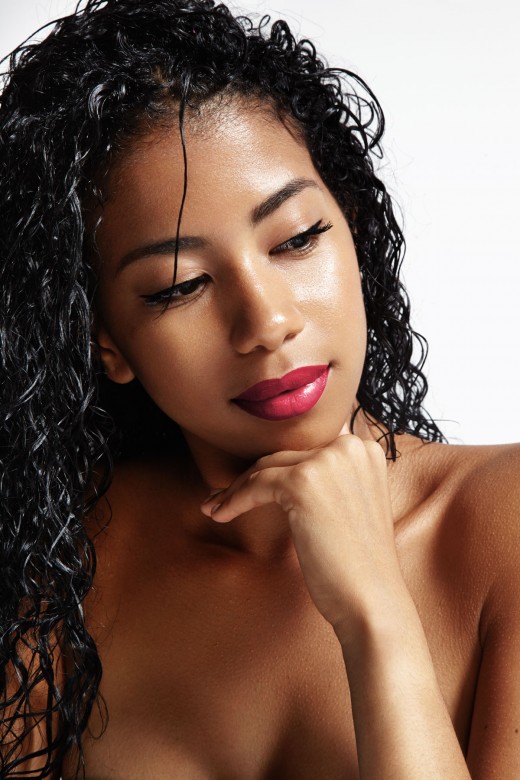
Photo: © Anastasia / Adobe Stock
Oils high in polyunsaturated fatty acids (PUFAs) include:
- Acai oil
- Argan oil
- Baobab oil
- Black cumin seed oil
- Borage seed oil
- Camelina oil
- Canola oil
- Chia seed oil
- Corn oil
- Cottonseed oil
- Evening primrose oil
- Flax/linseed oil
- Grapeseed oil
- Hemp oil
- Maracuja oil
- Meadowfoam oil
- Peanut oil
- Pumpkin seed oil
- Red raspberry seed oil
- Rosehip oil
- Safflower oil
- Sesame oil
- Seabuckthorn oil
- Soybean oil
- Sunflower oil
- Sweet almond oil
- Walnut oil
If you’re looking at the ingredients of your favourite sunscreen or moisturizer in frustration, there’s no need to lose hope — there are other options.
Why monounsaturated fats are safer for skin
We know that PUFAs have two or more double bonds in their molecules that make them susceptible to damage. On the other hand, monounsaturated fatty acids (MUFAs) have only one place, or double bond, at which oxygen can react.
While oxidation is still a risk, having one less double bond means that a reaction is billions of times less likely to occur. (See this book.) This makes MUFAs, like omega-7 and omega-9, a lot safer and more stable than PUFAs.
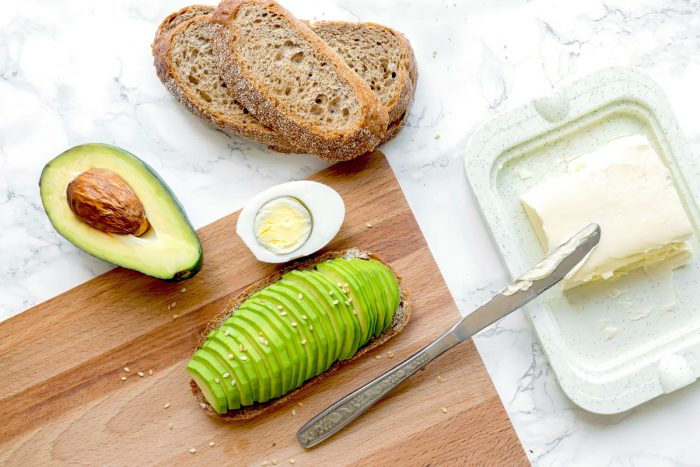
Photo: © masterq / Adobe Stock
Oils high in monounsaturated fatty acids (MUFAs) include:
- Avocado oil
- Bakuchi oil (babchi oil)
- Buriti oil
- Camellia oil
- Carrot seed oil
- Castor oil
- Crambe oil (abyssinian oil)
- Jojoba oil
- Macadamia oil
- Mango butter
- Marula oil
- Moringa oil
- Olive oil
- Shea butter
- Shea oil
While choosing a monounsaturated oil is a safer option, it’s important to note that the oils mentioned above are not 100% comprised of MUFAs. They still contain some PUFAs, just in smaller numbers than predominantly polyunsaturated oils.
One thing to consider is that the percentage of PUFAs in any given oil plays a key role in its likelihood to oxidize.
For instance, the PUFA content of olive oil can vary anywhere from 3.5% – 21%. In terms of oxidation, 21% PUFA is still a risk. But it’s a better choice than sunflower oil for instance, which by comparison is around 69% PUFA.
On the other hand, marula oil is 4% – 8% PUFA, making it much less susceptible to oxidation. Jojoba oil falls even lower, containing a maximum of 3% PUFA.
Monounsaturated oils are a great choice for pre-sun skincare, but they are still not quite as safe as the best choice: saturated fats.
Why saturated fats are the best fats for skincare
We know that MUFA molecules have one double bond at which oxygen can react, and PUFA molecules have two (or more) — so what about saturated fatty acids (SFAs)?
As it turns out, SFAs have absolutely no double bonds.
Thanks to the shape of these molecules, they have no room for oxygen to squeeze in. Even high heat (or sunlight) can’t force them to oxidize.
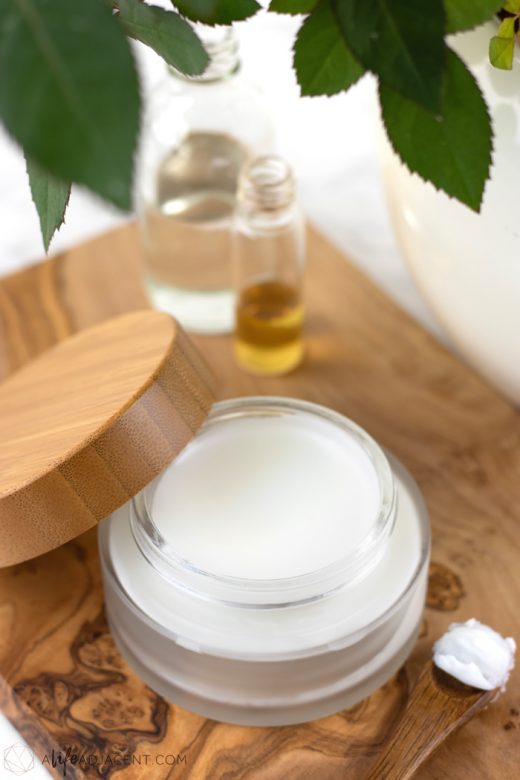
Oils high in saturated fatty acids (SFAs) include:
- Beef tallow
- Capric/caprylic triglycerides
- Cocoa butter
- Coconut oil
- Lanolin
- MCT oil
- Fractionated coconut oil
- Squalane oil
When using a saturated facial oil, you can rest assured knowing that it will not oxidize in the presence of oxygen, light, or high heat to create a cocktail of lipid peroxidation on your skin.
How to build a low-PUFA skincare regimen
Your best bet for a summer skincare regimen is to focus on products that contain predominantly saturated and monounsaturated fats.
Ideally, to protect your skin, your regimen should be as low PUFA as possible. Personally, I like to center my skincare routine around squalane oil and MCT oil, which are both completely devoid of PUFAs.
Does this mean I recommend throwing away any skincare product that contains PUFA oils? Not necessarily, and I definitely don’t condone wastefulness.
If you love argan oil and it causes no issues for you, by all means keep using it. Just use it carefully, and use it up quickly. It’s a good idea to buy the freshest, most high quality oil possible and keep it in the fridge to maintain freshness.
And if you truly can’t bear to part with some of your PUFA-based products, you can start by using them less often. It’s also a good idea to save them for the nighttime, when you’ll be exposed to less light.
I don’t think it’s necessary to be a purist. I won’t denounce something just because it contains a little bit of PUFA towards the end of the ingredients list. But when it comes to outdoor wear, I feel more comfortable seeing saturated or monounsaturated oils comprising the bulk of a product.
As it turns out, it’s easy to create a safer skincare and makeup routine without obsessing or resorting to making everything yourself. You just need to know what to look for.
Low-PUFA SPF for Face
Juice Beauty Oil-Free SPF 30 Moisturizer
This sunscreen is technically oil free, but contains saturated fatty acids in the form of capric/caprylic triglycerides derived from coconut oil. It also contains vitamins E and C, both potent sun protectors.
Best of all, it has 20% non-nano zinc oxide as SPF, which is a safe, effective mineral sunscreen. This is my go-to moisturizer year-round, and I just make sure reapply it more frequently during the summer.
Where to buy: Juice Beauty, Sephora, Ulta, Amazon

Juice Beauty SPF 30 Sport Sunscreen: I’ve recently switched to the Juice Beauty SPF 30 Sport Sunscreen. It’s similar to the Oil-Free Moisturizer, but you actually get a lot more product for a much lower price.
The Sport Sunscreen contains some castor, sunflower and jojoba seed oils, but they are lower on the ingredients list. The formula is mostly saturated, with a base of coconut oil and caprylic/capric triglycerides. It also contains vitamins C and vitamin E for antioxidant protection.
The product spreads very easily and also doesn’t contain sodium hyaluronate (the sodium salt of hyaluronic acid). This is a bonus, since hyaluronic acid can dry out certain skin types.
Overall, I love it. It has the same matte, non-greasy finish as the Oil-Free Moisturizer with improved hydration. Plus, the tube lasts for ages.
Where to buy: Amazon
Devita Solar Protective Moisturizer SPF 30+: Like Juice Beauty, this sunscreen is comprised of capric/caprylic triglycerides derived from coconut oil. It also contains 19% micronized, non-nano zinc oxide and antioxidant vitamin E. I haven’t used it personally, but it’s on my list to try.
Where to buy: Amazon
Low-PUFA SPF for body
Rocky Mountain Soap Co. Face and Body Natural Sunscreen SPF 31: This natural sunscreen is formulated with coconut oil and jojoba oil. It also contains a high 20% zinc oxide. It also doesn’t hurt that it smells like birthday cake. Plus, my pale skin didn’t burn at all after wearing this for hours in full sunlight.
Where to buy: Well.ca
Devita Natural Skin Care Solar Body Moisturizer SPF 30+: This broad-spectrum sunscreen is made with a base of capric/caprylic triglycerides, shea butter, olive oil, and jojoba oil to nourish your skin while it protects. It even contains squalane and vitamin E for even more UV-protective punch.
Where to buy: Amazon
Nine Naturals Natural Sunscreen UVA plus UVB SPF 32: This sunscreen looks very promising. The base is comprised of olive oil, jojoba oil, and shea butter. Not only does it contain safe fats, but it has a whopping 25% non-nano zinc oxide, which is even more than the minimum 20% required for adequate protection. It’s also worth nothing that it’s pregnancy safe.
Where to buy: Amazon
Find even more recommendations for safe sunscreens for your face and body that are also low-PUFA or PUFA free in our guide to the best non-toxic sunscreen.
Low-PUFA facial oils
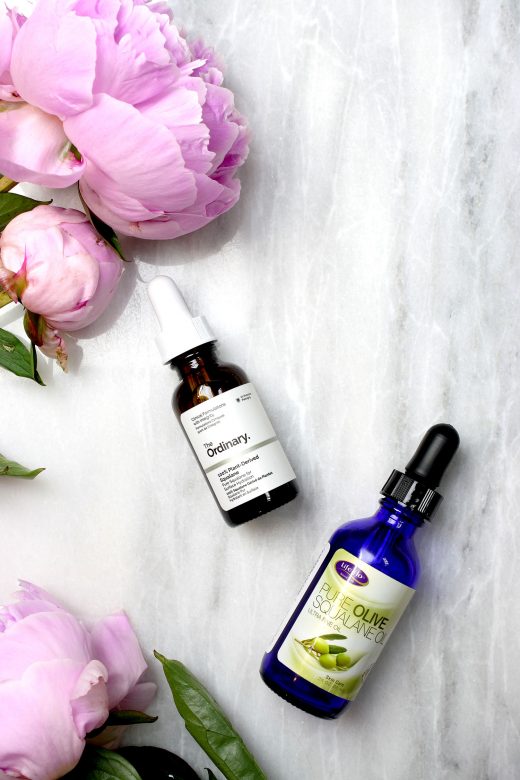
Squalane oil
Not to be confused with shark-derived squalene, squalane is a cholesterol precursor found in human sebum. It’s completely saturated, so it’s not at all susceptible to oxidation.
In fact, it appears to function as an antioxidant, protecting the skin’s surface from lipid peroxidation caused by UV exposure. While it shouldn’t replace your SPF, it can help protect you from sun damage.
Don’t worry — squalane is cruelty-free and derived from olives or other plant sources. It’s my favourite oil at the moment. It’s light, soaks into skin quickly, and has never caused me to break out. I love to layer squalane under my SPF for extra moisture. It also soaks right into hair.
The Ordinary 100% Plant-Derived Squalane
Where to buy: Amazon
LifeFlo Pure Olive Squalane Oil
Where to buy: Amazon, iHerb
Timeless Skincare Squalane Oil
Where to buy: Amazon, YesStyle
Biossance 100% Squalane Oil
Where to buy: Sephora, Biossance, Amazon
Marula oil
This monounsaturated, golden oil has a slightly more viscous texture than squalane. A little goes a long way –– it’s silky and very spreadable.
It also contains more vitamin E than argan oil, which gets a lot of buzz. According to Dr. Ray Peat, topical or internal vitamin E has been found to reduce the damage caused by ultraviolet radiation.
Like squalane, marula oil also makes a nourishing hair oil.
Shea Terra Organics Namibian Marula Cold-Pressed Oil
Where to buy: Amazon
Drunk Elephant Virgin Marula Luxury Facial Oil
Where to buy: Amazon
The Ordinary 100% Cold Pressed Virgin Marula Oil
Where to buy: Amazon
Acure Organics Marula Oil
Where to buy: Amazon, Well.ca
Nilotica shea butter
Nilotica shea is typical Western shea butter’s softer, silkier, and more luxurious cousin. Its lighter texture makes it more suited for the face. For some people — me included — typical shea butter can be congesting. Rubbed on the backs of your hands, most shea butters will sit on top like a waxy film, whereas Nilotica shea butter will soak right in. Try it.
Contrary to typical shea butter, which is harvested from West Africa, Nilotica shea butter is harvested from the rare Nilotica trees in secluded regions of East Africa. It’s rich in soothing compounds like allantoin, which makes it great for those suffering from inflammatory skin conditions. It’s also richer in vitamins A and E than Western shea butter.
Shea Terra Organics Shea Nilotik Virgin Shea Butter: The Nilotica shea butter that I’ve been using and loving. According to their website, the butter is harvested by women in Uganda who are paid up to eight times the usual wage.
Where to buy: Amazon
LXMI Pure Nilotica Melt Nourishing Balm-to-Oil: This luxury option is on my list to try. According to LXMI, their shea is harvested by low-income women in the Nile Valley who are paid three times the local wages. Not sure how their wages compares to Shea Terra Organics, but both companies seem to have a great philosophy.
Where to buy: Amazon
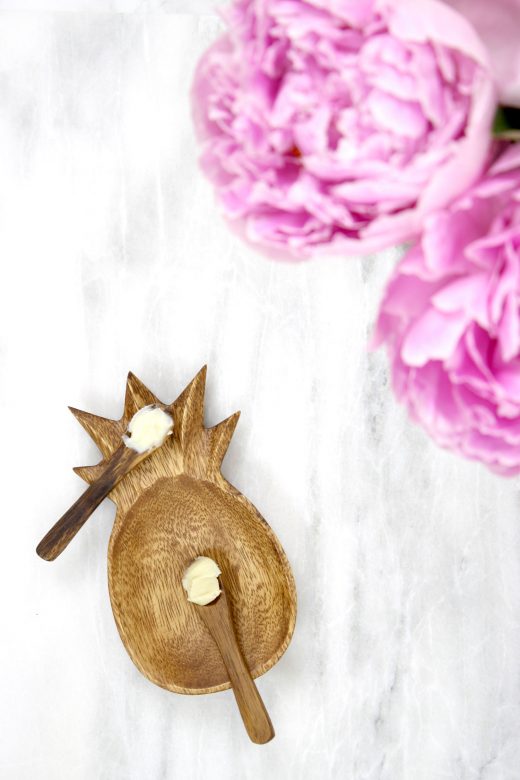
Low-PUFA eye care
I stopped using eye creams – most of them are high in PUFAs, or just have a high price tag. Instead, I’ve been using serums and layering my own oils or butters on top.
The Ordinary Caffeine Solution 5% + EGCG: This light serum contains a high 5% concentration of caffeine with potent antioxidant EGCG, derived from green tea leaves. I’ve been using it to improve my puffiness and dark circles with great results so far. I love this product, and I also love its price.
Where to buy: Amazon
Jeffrey James Botanicals The Eye Gel: This cooling, cucumber-infused eye gel is formulated with jojoba oil. Thanks to the inclusion of Cassia Angustifolia Seed Polysaccharide, a botanical form of hyaluronic acid, the gel forms a jelly-like layer under your eyes that locks in moisture. This particular form of botanical hyaluronic acid is the same one used by natural brand Consonant in their cornerstone luxury product, Hydrextreme. The Eye Gel is packed with amino acids that nourish the delicate eye area, and antioxidants that help protect from oxidative damage.
Where to buy: Amazon, iHerb
Low-PUFA makeup
The right makeup should nourish your skin just like your skincare does. This is absolutely possible with the right products.

RMS Beauty Un Cover-Up Concealer/Foundation: This hybrid concealer/foundation of only 8 ingredients is formulated with coconut oil, castor oil, jojoba oil and cocoa butter. The smooth, melt-into-your-skin texture makes it more than worth the price. It wears like a second skin. I will never stop buying this.
Where to buy: Amazon
BareMinerals BareSkin Pure Serum Brightening Foundation SPF 20: This oil-free liquid foundation is formulated with capric/caprylic triglycerides. It boasts a clean ingredients list free of parabens and silicones –– in fact, I think it’s the cleanest liquid foundation on the entire Sephora site. It goes on a bit oily, but the formula dries to a smooth finish. A little goes a long way. You only need a few drops. Contrary to the negative reviews on the Sephora site, I liked the formula. However, their shade selection is off. The lightest shade, Bare Porcelain, was too orange for my skin.
Where to buy: Amazon
RMS Beauty Living Luminizer: Another favourite from RMS Beauty, this gorgeous, mesmerizing cream highlighter is formulated with coconut, castor, and sunflower oils. (Since the polyunsaturated sunflower oil appears lower on the ingredients list, I don’t think it’s a big deal.) I’m a fan of dewy makeup looks, and this product doesn’t disappoint. This will make your cheekbones positively glisten with a subtle, silvery, translucent glow. It also gives you a wet finish that just isn’t possible with powder highlighters.
Where to buy: Amazon
RMS Beauty Magic Luminizer: Warmer, bolder and more opaque than the Living Luminizer, RMS Beauty’s Magic Luminizer graces your complexion with a metallic, champagne opalescence. The formula is thicker than the Living Luminizer thanks to a higher percentage of coconut oil and beeswax. It feels drier on your skin, almost like a powder, but without the overly matte finish of a true powder highlighter. It’s also more heavily pigmented. The result is a dramatic, buildable glow that looks lit from within. I like to layer the Living Luminizer over the Magic Luminizer for the perfect combination of pigment and dewiness.
Where to buy: Amazon
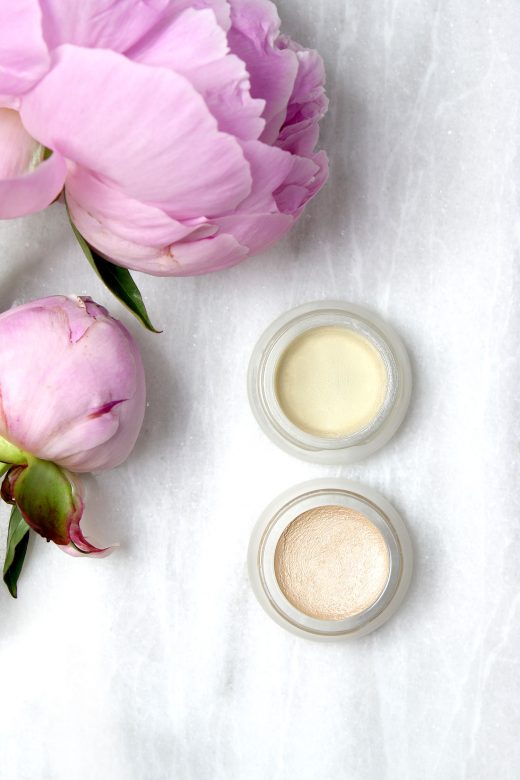
RMS Beauty Champagne Rosé Luminizer: RMS Beauty’s latest highlighter creation is a blush-pink luminizer that imparts a pinkish opalescence to your skin. Based on the ingredients, it looks similar in texture to the castor oil-based Living Luminizer. I can’t yet justify another highlighter purchase, so for now this one is on my wishlist.
Where to buy: Amazon
bareMinerals Blush: This natural mineral blush has a clean formula of just pure minerals — that’s it. It’s also very economical. A jar of this will last forever.
Where to buy: Amazon
bareMinerals Faux Tan All-Over Face Color: This natural mineral bronzer is my go-to for contouring. Like the bareMinerals blush, it’s economical and the formula is clean.
Where to buy: Amazon
RMS Beauty Buriti Bronzer and RMS Beauty Contour Bronzer: These cream bronzers are formulated with coconut, jojoba, and buriti oils, along with cocoa butter. I haven’t yet tried them, but I already know I love everything from this line. As soon as my bronzer of choice runs out, I know what I’ll be trying next.
RMS Beauty Buriti Bronzer
Where to buy: Amazon
RMS Beauty Contour Bronzer
Where to buy: Amazon
RMS Beauty Lip2Cheek: This multitasking cream blush and lip colour is on my wishlist. Like all of RMS Beauty’s makeup, it’s based on safe, stable fats, and boasts a short, natural ingredients list. The creamy formula is highly buildable, providing a subtle flush or a pop of colour depending on how much you use.
Where to buy: Amazon
Low-PUFA lip care
Shea butter: Pure shea butter is, in my opinion, the best natural lip balm. It’s a saturated fat that is safe even when ingested (which is important, since ingestion is inevitable with any lip product). Nilotica shea butter is too thin for lips and will rub off easily, but Western shea’s thicker, richer texture is perfect.
My favourite shea butter is Out of Africa’s Wildcrafted Shea Butter in Vanilla. The scent is intoxicating, and it doesn’t have the crumbly texture of some other brands of shea butter. Instead, it’s smooth and rich, which also makes it perfect for incorporating into a cleansing balm. Bonus: their huge tubs will last you forever.
Where to buy: Amazon, iHerb
The only caveat with using shea butter as a lip balm is that it does not contain enough SPF to prevent DNA damage on a sunny day. Which leads me to my next recommendation…
Green Cricket SPF 30 Lip Balm: This natural lip balm is made with a combination of shea, coconut, avocado, jojoba and castor oils, with 20% zinc oxide as SPF. Most lip balms that claim to be SPF 30 have a far lower percentage of zinc oxide. It also has vitamin E as antioxidant. I use it by itself or underneath my lipstick if I’m going to be outside. Due to the nature of lip products, this must be reapplied often to ensure adequate protection.
Where to buy: Well.ca
Bite Beauty Amuse Bouche Lipstick: While their lipstick contains some PUFAs, Bite Beauty is still one of my favourite brands for lip products. Their products are free of silicones and glycols, and contain beneficial antioxidants like resveratrol. Since you will inevitably ingest some of your lipstick, it better be one of the cleanest products in your makeup bag. I also love their Matte Crème Lip Crayon.
Where to buy: Amazon
RMS Beauty Lip Shine: Yet another product from my favourite line. It’s made with castor, coconut and buriti oils, along with cocoa butter. It’s intensely hydrating and gives your lips a gorgeous sheen. I love it in Honest, which is a flattering pink. It’s described on the Sephora website as a “nude, dusty rose,” but on my colouring it shows up as a pink with a hint of coral.
Where to buy: Amazon

These makeup and skincare options can be worn to the beach without inflaming or aging your skin. Let me know if you try anything on the list, or if you find something else that I should know about. I’d love to hear your discoveries.
Low-PUFA skincare recipes
If you’re looking for low-PUFA skincare that you can make at home, try our DIY makeup melting cleansing balm, our natural DIY makeup setting spray, or our moisturizing DIY overnight face mask.
References
http://www.functionalps.com/blog/2011/09/17/fats-temperature-and-your-body/
Deep Nutrition: Why Your Genes Need Traditional Food by Catherine Shanahan M.D.
http://altmedrev.com/publications/4/1/29.pdf
http://www.functionalps.com/blog/2012/02/27/using-sunlight-to-sustain-life/
Pin it for later
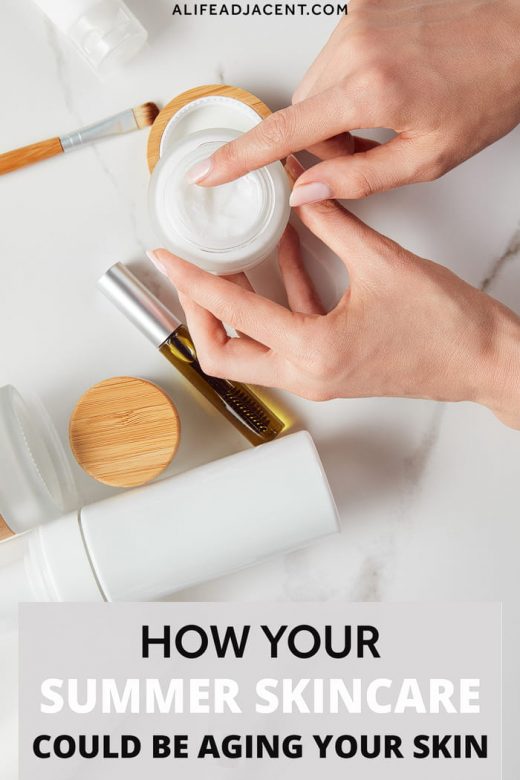

joy
Friday 19th of May 2023
Just wondering, why do you suggest using MCT when coconut oil destroys the skin's microbiome?
Kyla
Wednesday 31st of May 2023
Hi Joy, I wouldn't recommend MCT oil if I believed it destroyed the skin's microbiome.
MCT oil or caprylic/capric triglycerides is one of the most commonly used ingredients in skincare products for its stability and because it’s so well tolerated by a variety of skin types. It's non-comedogenic, and its anti fungal and antibacterial properties help control acne-causing bacteria, so it can be helpful for acne prone skin.
Despite its antibacterial effects, I'm not aware of any evidence that it completely destroys the skin's biome. If this is a concern for you, using a probiotic product alongside it might be helpful. I’m not sure if maybe this comment is based on a bad experience with MCT oil, but everyone’s skin type is different, and maybe MCT oil just isn't the right skincare oil for you. I hope this helps.
Rachel Colorado
Saturday 6th of May 2023
I love this post. Is anyone doing a project to collect more and more products with these criteria? Some go-to authors who are writing about the same?
Kyla
Tuesday 9th of May 2023
Hi Rachel, thank you! I love connecting with others who follow this lifestyle, so I'm really happy to hear you enjoyed the post. I actually plan to publish a few low-PUFA skincare guides soon, because I've tested and collected a lot of new products since I wrote this. So I hope you'll find those new articles helpful.
To answer your Nilotica shea butter comment, I've never used the Swanson brand personally, but it looks good to me. I might order it too! If you end up trying it, I'd love to know what you think.
Rachel
Friday 10th of February 2023
How about Emu oil? I see a brand here on the shelf in Colorado.
Charlie
Saturday 8th of April 2023
@Kyla, Hi. Great article and completely makes sense to me as I avoid PUFA seed oils in food and have done for years.....so it connects the dots that it they aren't great for skin either. Just a question about Squalane though as essentially it is a hydrogenated fat....again- wouldn't consume this type of fat in diet so would be very hesitant using it on skin. Any thoughts?
Kyla
Sunday 12th of February 2023
Hi Rachel, emu oil is comprised of approximately 42% oleic acid (monounsaturated), 21% palmitic acid (saturated), and 21% linoleic acid (polyunsaturated) (source). It's not the highest in PUFA, but it's not low-PUFA either. If you're looking for oils with similar viscous textures, I'd look at castor oil or shea oil. I hope this helps!
Heather
Sunday 23rd of October 2022
Hi any thoughts on a great pufa free skin tint with spf? I have tried a brand named arraza I believe, it was very good. Looking for more. Thanks
Kyla
Sunday 6th of November 2022
Hi Heather, sorry for the delay! Here are a few low-PUFA options for you – I hope this helps. By the way, where did you get the Arraza product you mentioned? I'd like to check it out.
Lately AKT Therapy D-Luxe Daily Bronzer is my favorite – it has very simple ingredients with an olive oil and beeswax base. It comes in 2 colors too.
https://rstyle.me/+oDFWQsv4Ag96vei2vHXVHA
Juice Beauty Stem Cellular CC Cream has more color options. It's mostly caprylic/capric triglycerides and castor oil, but it also has some sunflower oil unfortunately.
https://rstyle.me/+s3UxpbEuN_Xd2u81nL3qSw
All Good Tinted Sunscreen Butter is another nice option if coconut oil works for your skin type, but it's a thicker formula, so I'm not sure if that's what you're after. It's more of a sunscreen than a skin tint.
https://rstyle.me/+312xAz0mna9iT0c_bTgQeQ
Finally, Thinksport Everyday Face has a lighter tint and a mostly low-PUFA base (but again, some sunflower oil later in the ingredients list).
https://www.amazon.com/shop/sophiegtv/list/2L0FJV56HZY5A?ref_=aip_sf_list_spv_ofs_mixed_d
Aimee
Friday 15th of July 2022
This is a spectacular article! I have revisited it pretty much anytime I'm buying a new product! It is hands down the best resource on pufas in skincare I have ever found.
I was wondering if sandalwood nut oil is a good choice? I'm struggling to find adequate information about it's PUFA content and some of the information I have found is conflicting.
I'm specifically interested in the Living Libations Sandalwood Best Skin Ever. It has jojoba oil and sandalwood nut oil.
I'm so grateful for the information you offer!!!
Kyla
Saturday 16th of July 2022
Hi Aimee, thank you so much for the kind words. I'm so happy to hear that you've found the info helpful! You're right, there's a lot to unpack with sandalwood nut oil and its unique ximenynic acid. I'll need some time to look into it properly, so I'll get back to you soon!